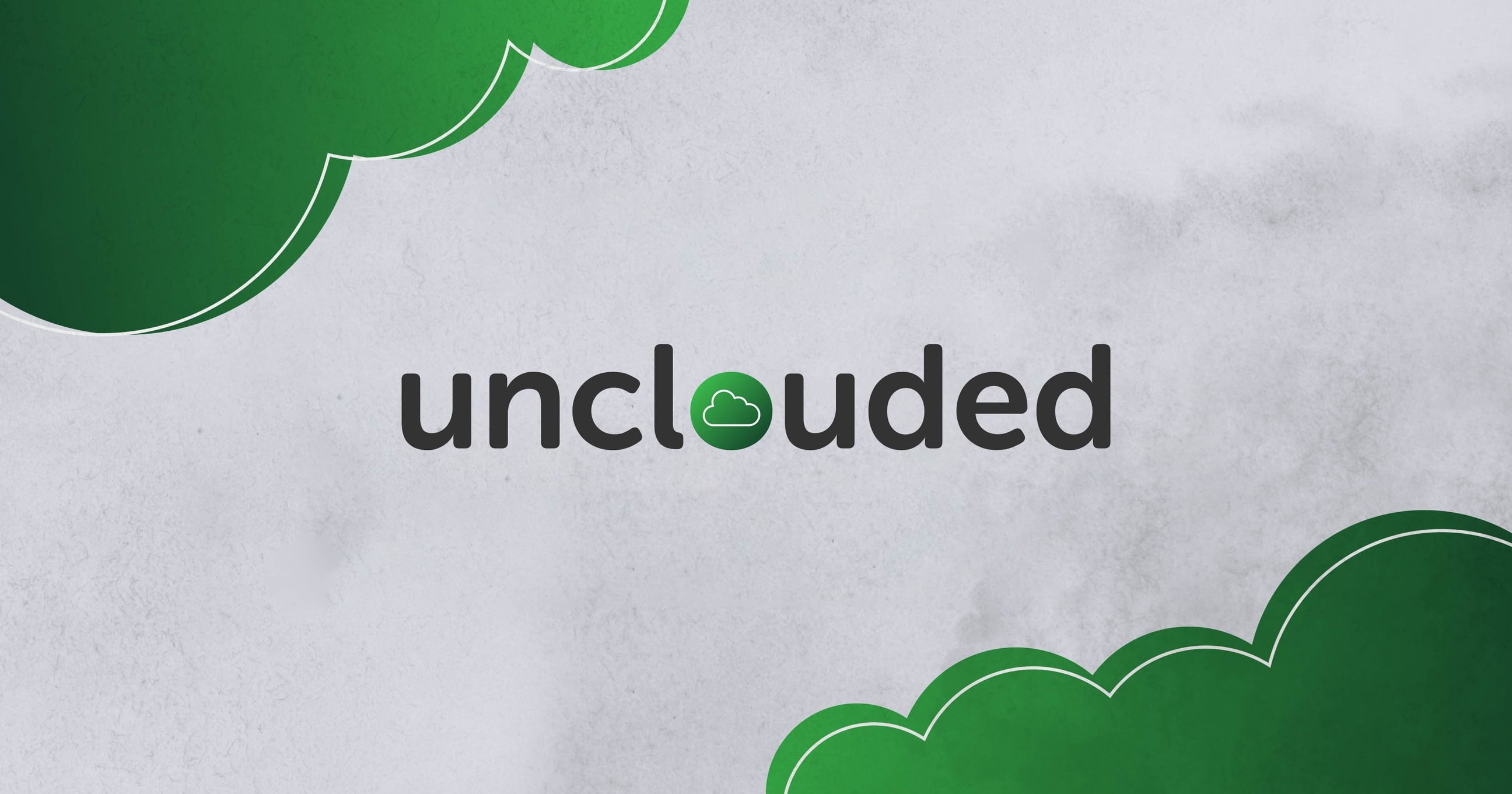By now, the benefits of multicloud—from greater flexibility to less lock-in—are well known. But with rising concerns about complexity and cost, adopting a multicloud approach isn’t always as obvious as it seems, especially for SMBs.
If providers don’t offer interoperability that enables data to flow freely between clouds, the promise of flexibility comes to a grinding halt. Plus, costs can creep up if companies inadvertently pay for redundant offerings, creating a roadblock for budget-conscious SMBs. And these added risks only complicate an already-difficult choice for cloud users facing a crowded and competitive market.
It’s time to usher in a new era of cloud, Structure Research analyst Phil Shih says.
In the “era of best fit,” users must consider not only how different providers can meet their needs but how to optimize their total cloud infrastructure. Listen to my full conversation with him below as he explains why multicloud effectiveness isn’t just about working with multiple providers—it’s about creating value across and between them.
The following transcript has been slightly edited.
Mike Maney: There’s no question about it. Multicloud deployment is the new reality for corporate IT. According to IDC, over 93% of companies use multiple infrastructure clouds for their business operations. And as a result, vendors are responding to demand. Even Microsoft and Google providers that have historically been stubborn single cloud advocates have made platform changes to make their environments more multi cloud friendly.
Still, though, while multicloud may seem like a no-brainer, factors like growing costs and complexity make it difficult to execute effectively, we’re sitting down again today with Structure Research Analyst Phil Shih to discuss not only the advantages that multi cloud offers, but also how to navigate complexity and manage the bill.
Welcome again, Phil. Glad to have you back.
Phil Shih: Hey, Mike, thanks for having me. Good to be on.
Mike Maney: So today I want to talk a little bit about multicloud. And I think it’s a really timely topic, I think it’s something that we’ll have some fun with. Multicloud has experienced tremendous growth over the past few years, especially throughout 2020 and 2021, for multiple obvious reasons, from startups to the US government, everyone seems to be all in on multi cloud.
When we look at the Pentagon called off that $10 billion Jedi contract at the center of what’s a major legal battle involving some of the biggest players. And instead that DoD is going to launch a new multicloud computing initiative. IDC is out there saying 62% of companies say they choose multicloud to leverage best of breed capabilities of individual providers. And Flexera, which does a great report every year, found that 68% of CIOs are worried about having to use tools from a single vendor, and worried about lacking the freedom to move their data as needed. Let’s start by setting the stage for multicloud’s appeal. Why is it a good strategy for a business today?
Phil Shih: Yeah those are great points that you raised. And I think the research out there all points in a similar direction. And that we’re moving from where not too long ago, where multicloud was probably not something that people did people bet on a single platform to where they’re now, , keeping that bet on a single platform understanding, I think, the value proposition and getting comfortable with cloud and then kind of expanding and maximizing its utility through through multicloud use.
So at a high level, I think the value for me, as a third party observer, is that at a basic level, it’s a good way to just hedge your bets, right? So these services, cloud infrastructure services run extremely well. But they’re run by humans. And they’re designed by humans, and they’re imperfect. And so just kind of not having all your eggs in one basket, as the same goes, is certainly a smart thing. At another level, and I think probably the one IT decision makers are thinking about the most these days, is tool sets, right?
We’ve very quickly moved beyond just thinking about raw compute and storage infrastructure to the tool sets and what you can do within that cloud based computing, storage infrastructure, what tools you hear all the buzzwords around AI and machine learning. And just the amount of capabilities spans the gamut. And they’re very different across each individual or different cloud infrastructure provider. I think that’s the foundation.
Another level that maybe sometimes gets overlooked and maybe not mentioned as much as that cloud infrastructure services all tend to have different geographic footprints, right? So if you care about your performance, if you care about where your data is located, where more importantly, where you’re ultimately where your customers are, and users what they care and what they think about that can define. Again, the footprints for each of the clouds are different. So that’s another choice tool sets, as well as where the actual server is, and then what, , where that data center’s located, and in what jurisdiction that is, and how far does it from the bulk of your end users. You don’t want them accessing content and workloads over a very long distance. That’ll impact performance and of course, create more, more work for developers and system administrators.
Mike Maney: Yeah, I know that’s one of the criteria that really sets a hyperscale provider apart, whether it’s one of the big three or whether It’s one of the alternative providers is having that significant geographic footprint. I want to get back to what you started out with. When is the best of breed provider versus a dual provider? The best choice? And is there ever an argument against choosing a best of breed provider?
Phil Shih: I think it always depends, right? I think that when you think about how we use cloud services, it depends on the organization’s capabilities, it also depends on what you’re trying to accomplish. So, if it’s for example, a design agency, that has different requirements from a high volume content or news website. So, I think that will drive the end user to what you describe as a best of breed or something, that’s a more, do it yourself, or more, do it for you type of service, or a combination of both.
Does an organization have a staff, a staffer or a staff that can handle a more technical user experience working directly with an API reading the user documents and having no issue with that? Or is it an organization that likes a more intuitive GUI based interface or wants some sort of hand holding, or help or assistance or guidance from the provider?
How do they want to consume that on demand? Do they want to consume that more as it is a complete end to end service? As you can see, I’m almost starting to ramble here, but the scenarios and the permutations of what the service experience and how the team, the team as a whole, and the individual team members interact can range so to answer the question directly, I think it just, I don’t want it to be a cop out. But it really does depend on the IT department and their tendencies, as well as what they’re trying to accomplish? And what type of content or workload is ultimately being hosted on this infrastructure?
Mike Maney: I gotta admit, you had me at API. Yeah, one of the things that you did talk about, though, was with skill set, right? Is it the department’s skill set, because we know that’s a big, that’s a big challenge for everyone in the industry, as some of the hyperscalers suck up all a lot of the talent.
So in a multicloud world, can startups or small businesses with limited budgets, see the same benefits from multi cloud as some of the larger enterprises? Right, how do they ensure that that appetite for a best of breed vendor doesn’t exceed their budget limitations?
Phil Shih: Yeah that’s certainly a challenge. And there’s always going to be that kind of gap or gulf between less resources and more resource to IT departments who can throw a lot of bodies pay for the training had the patience to wait for that training and certification to come through, as well, whereas smaller organizations are a little more up against it, and maybe can’t make those types of investments and investments, maybe don’t have the time horizons to wait for them.
And so that’ll define how they think of multi cloud versus a large organization that might even acquire another company that happens to be a Microsoft shop, the acquiring company, maybe it already has a team that’s been working with AWS for many years, started out as shadow IT, but became more formalized. And, and structured.
Whereas the small business and medium sized business probably doesn’t have the luxury of that. And so maybe they’ll go with a public cloud platform for certain things, maybe they go to the alternative space and look at other service provider oriented clouds, that have a different type of experience, simply because they can’t make the investments are looking for something that’s a little more, just just a better fit, and it’s something that they can kind of get on to don’t have to wait as long and can get the help they need.
And then over time as they grow, do those things that I described, that the larger organizations do, which is hire, train, have the patience, invest. And so you’re not going to close that gap. But I think that all that does is define and really just kind of underscores the whole concept of the idea of multicloud to say, “Hey, this is not a uniform thing. This is not a one size fits all and and that an organization’s going to consume in their own way, and follow different patterns.”
Mike Maney: That phrase, better fit, is something that I know I’m hearing a lot more in the market, and we’re hearing it more and more with customers and partners, I would imagine, other providers are too, because it is it’s not one size fits all, and a lot of the core technology and the core features and products that most companies would need, right, and we’re not talking massive scale enterprises that have unique requirements. But those common elements are basically commoditized.
At this point across the board, right, there’s parity among whether you’re looking at Linode and Digitalocean, or AWS. And, as we’re talking infrastructure here, for the most part, we’re not talking quantum computing. When I was talking to my contact at ClearPath Strategies that does a lot of polling, they just ran a global study of roughly, I think it was 800 or so developers around around the world, and one of the things that we found getting back to that, but that they found getting back to that best fit approach is that companies are now able, because there’s parity there, they can, they’ve got choice in their vendors, and they can then they’re starting to choose based on providers that align a little bit more with their values.
Now, the first and foremost that this study found was that people want people want to, first the first criteria that people have is, can I run my stuff? Is it up? Is it up? Does it work? And again, can it get the job done? Right? First and foremost. But then as you dive into it a little bit more, you realize that they’re like, Well, I’m not necessarily wedded to this platform. If there’s a crack in customer service, or if there’s a drop in performance, or if they align with something that doesn’t fit my company’s or my personal values.
I’ve got other places that I can go and I will move right, I will consider moving. And that’s something different. Right? That’s a new thing for this industry. Because just like back in the day you never got fired for buying IBM. There are now choices at the hyperscale level, and that’s good. That’s good for this industry.
Phil Shih: I can’t disagree. I think fundamentally, the bar has been raised and it’s happened in a pretty short timeframe. When you really think of the history of computing, ready made cloud infrastructure servers have been around for maybe barely a decade and a half. And kind of did the bar being raised to where you talk about parity, in terms of raw and core compute and storage. And then let’s call them the basic tier of functions that are pretty comparable, across clouds. And that creates a situation where, okay, I know I can get this tier, the price range, yes, the prices can vary, but not as much as five to 10 years ago. I understand the pricing better, it’s pretty comparable.
Now I’m thinking about some of the other things that I need to accomplish. And if I’m not getting it here, I can probably move to another service and still get the kind of base that I need. And maybe address that, like you mentioned, the performance issue, or I need a certain type of location to go with that. Maybe I need an extra server, a little bit of a service wrapper that I’m not getting here, ran into some issues, and I didn’t get the help I needed? Well, I’m going to try to address that. So I would leave you with the comment that it’s always historically been a little more challenging and difficult to move.
We recently moved email platforms, I can tell you, that wasn’t exactly something I will look forward to every day. But yeah, imagine moving your infrastructure. I mean, it’s the same, it’s the same kind of headache, but at the same time, the platforms, the technology, the tools continue to evolve, continue to get better and, the ease of doing that continues to progress. So I think I agree with your observations. I would agree with them. And that’s where we’re headed.
Mike Maney: I think I would be much more inclined to and comfortable moving infrastructure than email. Just losing one message can drive you nuts. You talk about complexity now. And I think that’s a growing concern, especially in a multi cloud world, right? Even if it’s moving that way, things can still be complex. There have been studies where 93% of cloud users say they have adopted a multicloud strategy, where you’ve got 80% of organizations say, complexity is a downside.
Deloitte says that almost half of cloud users, I think it was something like 47%, say cloud chaos is the biggest risk to their bottom line. And I’ve talked to John Hill, our VP Revenue Ops here, and his quote to me was, if the 2010s were all about migrating to the cloud, then the 2020 decade and beyond will be about making a highly portable stack reality.
And I think as somebody who grew up on standards more so than open source, I was having that conversation with Rob Hirschfeld the other day, about how it’s not really about open source, it’s about standards. Is that what makes all of this work? And it made me think is multicloud inherently complex? Or what does complexity mean in this context?
Phil Shih: There are different levels and silos of complexity. At one level, it’s just how easy is the service to use? How difficult are the tools, how easy it is to understand how fast can I get my infrastructure and my workload up and running? And then how can I enhance it, manage it, optimize it. And I think that is kind of a core element of complexity that either can be solved, through interfaces and ease of use and the quality and design of the technology.
And then there’s the human element which is do organizations, as they are increasingly either faced with complexity, look into their organization and say, Hey, is this something that our team can handle? Do we make the choices of clouds based on let’s find a service that is a little less complex and easier to use? Or do we get the help of a managed services or professional services organization, which you are also seeing out there in the marketplace?
Then I think the other side of kind of the the complexity question is as you alluded to, Mike, is around interoperability. These clouds have been built inside their own silos. There’s been fair commentary around vendor lock in, and being being stuck on a platform and having all your data sit there, and then have it be extremely difficult to move out and costly, for that matter.
Not to get into the weeds, but we’re only at the early stages of having more interoperability between these platforms. If you’ve seen what Azure, Microsoft Azure and Oracle Cloud infrastructure, what OCI have done, which is to create a certain level of interoperability in certain locations around the world. But it’s something that’s just started to develop, it’s certainly going to take some refinement and adoption is going to take some time.
But that reflects where we are in terms of the state of the industry standards, interoperability, the ability to tie different cloud platforms. We’re just not there yet. And I think it will take some time. So for now, it’s mostly about skill sets at organizations, aligning them to different platforms, or different types of cloud platforms and kind of operating a bit more simply, separately, rather than in a more integrated fashion. But that will develop and I think that’s going to be probably one of the big themes of this coming decade that we’re really just starting.
Mike Maney Yeah. It was a hot topic this week. There’s a big Wall Street Journal story that went around , talking about how it’s not just the big three there, going back to our other conversation how people are now saying, “Well, I don’t have to just stick with Amazon.”
So there’s cracks starting to form. And one of the big themes in that article was the issue of ecosystem lock in and there was an executive that had a quote that said, every single provider wants to lock you into their ecosystem. And I had to jump and say, “No, that’s 100%, patently false. Not every provider wants to do that.” And I had to point out Linode, because that’s not our that’s not our business model.
We want people to be able to move in and out. And I don’t think that’s the same with other larger providers, right? That’s the roach motel analogy of want to get you in here and get you hooked on our products and keep you into that ecosystem, probably a good business strategy, but maybe not so good for a lot of the customers. Lock in which everybody, a lot of people, not even a year ago, we’re like no lock-in, not a thing, multicloud’s, not a thing. And then all of a sudden, we come out of it, and we’re starting to see everybody saying multicloud’s a thing lock-in’s a thing. And yeah, it’s real.
Phil Shih: Yeah, and you’ll see these big platforms getting pulled ever. So Microsoft and Oracle, I think that’s a good example of a more aggressive move. But even the likes of AWS, they’ve had quite a bit of success, when they decided they would start to make it easier for people to run VMware on its cloud. And so I think that’s an acknowledgment of “Listen, Hey, guys, we’re using tool sets and have legacy infrastructure that is perfectly fine and we’re going to need to support.” They’re going to need to open up or accommodate this wider range if possible.
Mike Maney: The brawl will be at Reinvent, when we see how many presenters are allowed to actually include the word multicloud on their slide deck. That should be the parameter.
So understanding and curbing cloud cost, that’s another part of the multicloud strategy. Cost optimization is one of the reasons that a lot of people say they want to take advantage of multicloud. And Andreessen Horowitz ignited a fiery online debate when they claimed most companies are overspending on cloud. So there’s a growing concern that the growth of multicloud adoption goes hand in hand with growing cloud costs. Is this a misconception? Or is there some truth to this fear?
Phil Shih: Maybe it’s a bit of both. But my take on this one is it doesn’t have to be that way. But there is a process. I would probably think there’s some truth to the fact that as you kind of adopt this model, there’s going to be a bit of a learning curve.That’s the point made is that, organizations when they try this, just because of the learning curve, familiarity, early stage adoption, that you’re going to hit some roadblocks and challenges and that make result in some cost overruns. But it doesn’t have to be that way.
And I think that over time, more more, just more and practice makes perfect, right. But also the technology that’s out there, vendor neutral technology. And the service providers, the cloud providers who incorporate this into their dashboards into their management portals. Who does a better job of this? Who makes this experience really easy to understand who has that, as you as you emphasize that open ethos internally, like, “Hey, we want to make it possible for you to use our services, but also to move in and out as you see fit and as your organization mandates.”
I think that that’s a really interesting opportunity. And another important point of differentiation that will make, again, not make cloud services more alike, but make them more different and make certain ones standout. Because some of them will be able to address this issue like how to optimize and manage your costs, not just in a single platform, but across your infrastructure that might be other clouds. It might be on premise or more traditional types of infrastructure. But those tools and who creates the best user experience. I think we’ll find an interesting opportunity as this, as you mentioned, as this problem creeps up on organizations that start to move to two clouds, three clouds.
Mike Maney: Yeah, it’s not necessarily the number of clouds, it’s the cost optimization, and then the visibility into what you’re doing. And then being able to have the tools to actually manage that. So you’re not so you’re not wasting money, or misspending on a cloud. Do you need to be spending a ton of money in an AWS for object storage, or you could be using an alternative provider at a much lower cost with the same performance to be able to store it there.
And how does that work? This is an area that’s really that’s exciting to me, and I think it’s going to continue to be a big deal.
Phil Shih: Mm hmm. I agree.
Mike Maney: So to start to tie it up a little bit here, the future of cloud is less about particular providers and more about creating value across and between them. That’s sort of the holy grail for a developer and for a customer is to have all of that smorgasbord out there at their doorstep. Our vendors today support multicloud. They’re moving that way. And I guess the bigger question here is what they say about multicloud, in alignment with how they practice and push multicloud.
Phil Shih: It’s a great question. Not an easy one, either. But when you think of infrastructure services, the entire ecosystem, I do think that the conversation, the narrative, the direction of the industry is moving more in that direction, especially when you consider service providers, perhaps, that are not even aligned with a cloud infrastructure platform, but help manage and enable.
So we’ll take like, x service provider. We’ll have maybe private cloud and bare metal internally, and they may support Azure and AWS, but their management experience, their portal experience has to align with the public clouds, as well. And so their job is to try to piece together an experience that ultimately I think is integrated as far as it can be, and perhaps in the future interoperable.
So I think that, looking at independent service providers, those that may not even be aligned with a specific cloud platform is indicative of where things are going on the public cloud side. Some of these big platforms have made some moves forward in that direction.
And then like a Linode, a more agile organization is able to make bigger steps, maybe start picking up the pace and running in that direction. It’s just like it is often in technology, you’ll see some of the smaller and more nimble organizations, providers, independent ones non aligned, if you want to call them that, will start to pick up the pace an just drag the big ones in that direction.
But yeah, I think we were at the stage of the cloud’s development where we were worried that single platform would run it over. I think we’re past those fears. We realize that the future is going to look a lot more diverse and a lot more competitive, quite simply.
When you see more real life use cases, customers will start talking to their vendors and saying, “Hey, I need to do this,” then the next customer says, “I need to do this,” and when there’s some momentum, you’ll see these behemoths push in that direction a little faster, and things will start to accelerate. I don’t know about snowball, but it’ll definitely accelerate. And I think that’s kind of just the natural course that this stuff takes.
Mike Maney: Yeah, in your comment on one cloud to rule them all is spot on. We’re seeing multiple studies from around the industry that are showing that, while the big three are still the big three, that number in the third and fourth spot in the market is held by this alternative cloud category. Us, DO, Hetzner, OVH and a couple of others.
This alternative hyperscale tier is a third of the market. And I want to say that’s healthy. Right? There’s lots of pie for everybody. It’s a big pie. And I think that’s a good thing.
I do want to ask you one final question to go out on. How can companies start to shift their mindset from looking at what individual providers are offering them? And start to think of how to have their cloud ecosystem as a whole?
Phil Shih: I think that’s a great question. And I want to just bring back that term, which is, best fit. How do you find the best fit? How do you as an organization, optimize what you’re trying to do with your infrastructure? How can we be most efficient? How do we find the best fit in terms of the workload to fit the underlying infrastructure?
What kind of tools do we need to use to make the best of that , whether that’s around performance or analytics, understanding and driving value and understanding that data, turning that into tangible action decisions that turn into positive business outcomes. I think kind of shifting the mindset in that direction, understanding not just what infrastructure does, but what else?
What other value can we get out of the infrastructure, and there’s a lot of data in there that organizations can extrapolate and present to the IT decision maker in a way that they can make decisions, and then drive positive business outcomes. So I think thinking about infrastructure, thinking about performance, and then moving into the data and the information to drive additional value around business outcomes. That’s the mindset shift that I think we’re already , we’re already in that shift.
But organizations need to think more above that and have that as kind of their driver and once that mind shift changes, then you will see the user’s decisions, how people procure, implement and manage their infrastructure change along with it. Because if you think in those terms, then you’re gonna make different decisions on multicloud usage. Quite frankly, I think it’s going to be a pretty natural kind of byproduct of that shift.
Mike Maney: Fantastic, great insight and another enjoyable conversation and really enjoying these. So, thank you very much. And I look forward to talking to you again, Phil.
Phil Shih: All right. Thanks for having me. And let’s do that again.






Comments